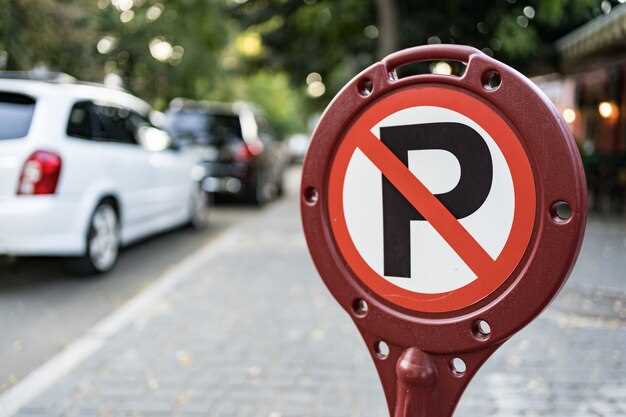
In the realm of vehicle ownership and operation, understanding the intricacies of temporary plates and permits is essential for both buyers and sellers. Temporary plates serve as a bridge between the purchase of a vehicle and the issuance of permanent registration. These permits are particularly important for individuals who need immediate access to their newly acquired vehicles while waiting for the formal paperwork to be completed.
The regulations governing temporary plates and permits vary significantly from one jurisdiction to another, making it crucial for vehicle owners to familiarize themselves with local laws. Failure to comply with these regulations can result in penalties, including fines or restrictions on vehicle use. Moreover, these temporary solutions often come with specific time frames and requirements that must be met to avoid legal complications.
In this article, we will delve into the various aspects of temporary plates and permits regulations, emphasizing their purpose, duration, and compliance requirements. By gaining a comprehensive understanding of these rules, vehicle owners can navigate the complexities of car ownership with greater confidence and avoid potential pitfalls during the registration process.
Step-by-Step Process for Obtaining Temporary Plates

Obtaining temporary plates is essential for drivers who need to operate a vehicle before receiving permanent registration. Follow these steps to ensure a smooth application process.
Step 1: Gather Required Documents
Before applying, collect necessary documents, which typically include proof of ownership (such as a bill of sale), identification (such as a driver’s license), and proof of insurance. Check local DMV regulations for any additional requirements.
Step 2: Visit the Local DMV Office
Find your nearest Department of Motor Vehicles (DMV) office. Some states offer online applications, but it’s advisable to confirm the process in person to avoid missing any critical information.
Step 3: Complete the Application
Fill out the application form for temporary plates. This form may ask for vehicle information, personal identification, and the duration for which the temporary plates are needed. Double-check for accuracy before submission.
Step 4: Pay the Associated Fees
Prepare to pay any fees associated with issuing temporary plates. Fees vary by state and may depend on the duration of the temporary registration. Acceptable payment methods can include cash, credit cards, or checks.
Step 5: Receive Your Temporary Plates
Upon completing the application and payment, the DMV will issue your temporary plates. Ensure you clearly understand how to display them on your vehicle according to local regulations.
Step 6: Adhere to the Validity Period
Temporary plates are valid for a limited time. Mark the expiration date on your calendar and take steps to obtain permanent registration before this date to avoid penalties or fines.
Key Differences Between Temporary and Permanent Vehicle Registration

The primary distinction between temporary and permanent vehicle registration lies in their intended duration and application. Temporary registration is typically issued for a short period, often ranging from a few days to several months. It is commonly used by individuals who have recently purchased a vehicle and are awaiting the completion of permanent registration paperwork. In contrast, permanent registration is a long-term solution that remains effective as long as the vehicle is owned by the registered owner and the registration fees are kept up-to-date.
Another significant difference relates to the documentation required for each type of registration. Temporary permits usually necessitate minimal documentation, such as proof of purchase, insurance coverage, and identification. Permanent registration, however, may require additional paperwork, including emissions tests, safety inspections, and proof of residency, depending on local laws.
Furthermore, temporary registrations may have restrictions on usage and are often marked differently, such as with a specific label or paper plate, to indicate their provisional nature. In contrast, permanent registrations provide the vehicle with standard license plates that signify a complete and legal registration status.
Financial implications also vary between the two. Temporary registrations are generally less expensive, as they cover only a brief period. On the other hand, permanent registrations involve a one-time fee, which may be significantly higher, depending on the jurisdiction.
In summary, the key differences between temporary and permanent vehicle registration include duration, documentation requirements, usage restrictions, and financial considerations. Understanding these distinctions is vital for vehicle owners to ensure compliance with legal regulations and to make informed decisions regarding their vehicle registration needs.
Common Mistakes When Using Temporary Permits and How to Avoid Them
Temporary permits serve as essential documents for vehicle operation, allowing users to drive legally while waiting for permanent registration. However, several common mistakes can lead to complications or legal issues. Understanding these pitfalls can help ensure compliance and smooth usage of temporary permits.
1. Failing to Display the Permit Properly
One common error is not displaying the temporary permit correctly on the vehicle. It is crucial to ensure that the permit is visible through the windshield and easily readable from the outside. To avoid this mistake, follow the specific guidelines provided by your local department of motor vehicles (DMV) regarding placement and visibility.
2. Using an Expired Permit
Another frequent oversight is driving with an expired temporary permit. These permits typically have a limited validity period. To prevent this issue, keep track of the expiration date and renew the permit in advance if necessary.
3. Misunderstanding Permit Restrictions
Many individuals mistakenly believe that temporary permits offer the same privileges as full registration. However, restrictions may apply, such as limitations on the type of driving or passengers allowed. Always review the terms of the permit to stay compliant with local regulations and avoid fines.
4. Not Carrying Supporting Documents
Driving without accompanying documents, such as proof of insurance or identification, can lead to complications if stopped by law enforcement. Keep all required documentation together with the temporary permit to ensure you have everything necessary during a traffic stop.
5. Ignoring Local Laws and Regulations
Different jurisdictions have varying rules regarding temporary permits. Failing to research the specific regulations in your area can result in unintended violations. Before using a temporary permit, familiarize yourself with local laws to avoid penalties or fines.
6. Not Following Up on Permanent Registration
Some drivers become complacent after obtaining a temporary permit and forget to follow through with the application for permanent registration. This oversight can lead to lapses in legal vehicle operation. Set reminders to complete the registration process before the temporary permit expires.
By being aware of these common mistakes and taking proactive steps, individuals can effectively navigate the regulations surrounding temporary permits, ensuring that they remain legal and avoid unnecessary complications while driving.
